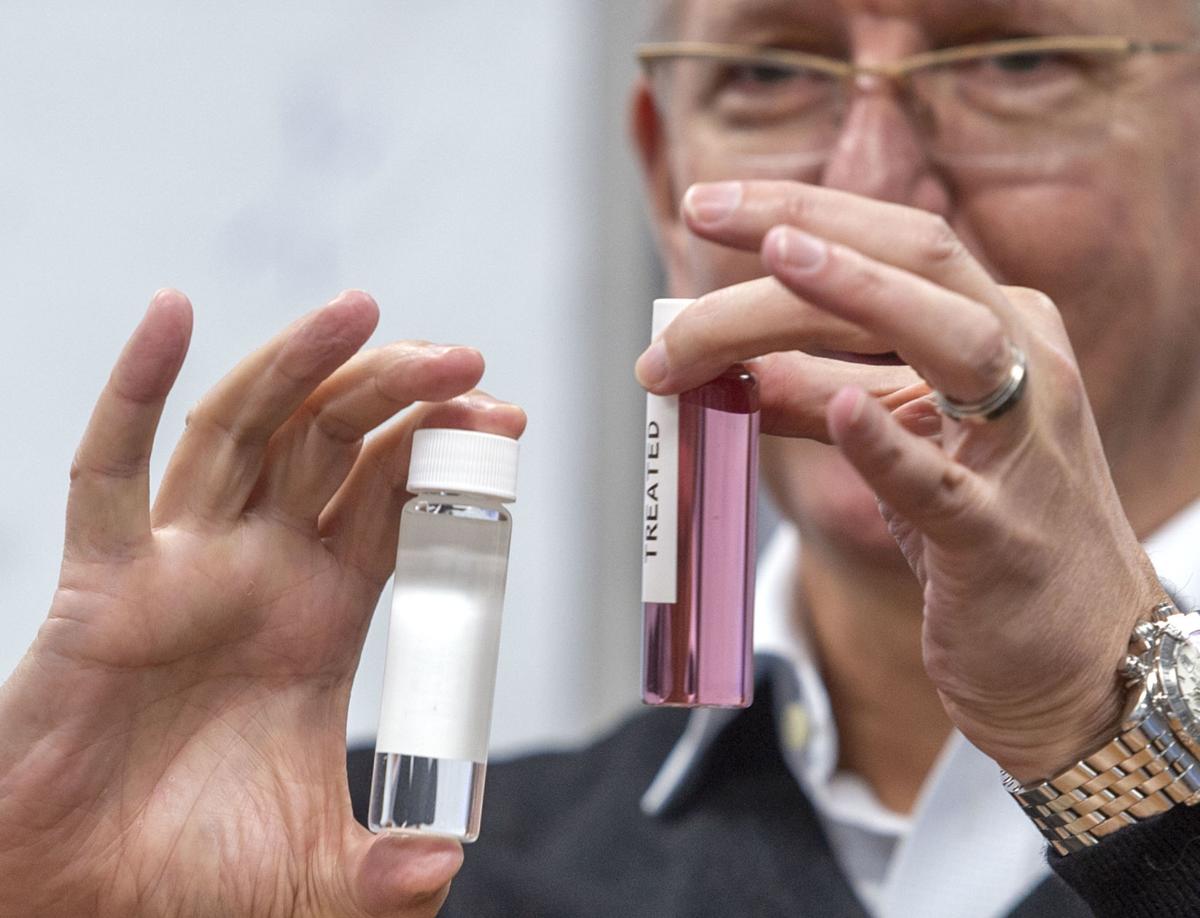Textile water treatment plant is first of its kind for U.S. textile makers
Published on by Water Network Research, Official research team of The Water Network in Case Studies
American Merchant Inc. Chairman Robert Burton shows water in various stages of treatment from the company's water treatment plant. David Crigger/BHC
American Merchant in Bristol, Virginia built is own water treatment facility at the manufacturing plant. The company hopes to reuse up to 70% of the water that is treated.
American Merchant expects to use 300,000 gallons of water daily and will employ a $2.5 million state-of-the-art plant to treat it.
About 70% of that water is expected to be recycled and reused in the towel-making process with the balance dumped into the city’s sewer treatment system, company Chairman Robert Burton said.
“This is the most advanced water treatment facility the U.S. textile industry has ever witnessed. It’s pretty common in the big factories in India, Turkey and China, but the U.S. textile industry never really caught up to cleaning its effluents,” Burton said. “The water we’ll be returning to the city will be void of color, void of odor and void of any solids; it will be as clean basically as the water we take in. We will process that water, recirculate and reuse 70% of that.”
The treatment process was designed by Roanoke, Virginia-based Pro-Chem and constructed beside the main plant building on Old Abingdon Highway. It will be fully operational next month.
Used water is pumped from the manufacturing plant to tanks inside the treatment building. Sediment will settle to the bottom and be pumped out. Water is then pumped through two containers, where it goes through two stages of reverse osmosis.
American Merchant received a $500,000 grant from the Appalachian Regional Commission to help with the plant’s cost.
They initially considered other options.
“If we were to discharge 300,000 gallons of water a day, on a very rainy day, the sewer system isn’t set up to handle that additional flow. They talked about us putting in a 500,000-gallon water tank to hold water so, if there is a rainy day, we would hold the effluent. We decided to just build an entire water treatment facility,” Burton said.
Like other phases of the operation, this technology is designed to maximize resources and minimize environmental impact. For example, the treated hot water will be recycled through a heat exchanger to help warm fresh water and reduce impact on the plant’s massive boiler, Burton said.
Media
Taxonomy
- Textile
- Fibers & Textiles
- Textile Machinery
- Textile
